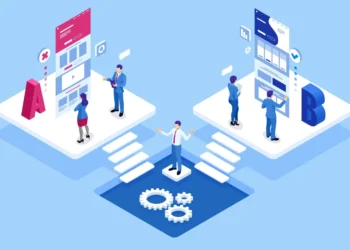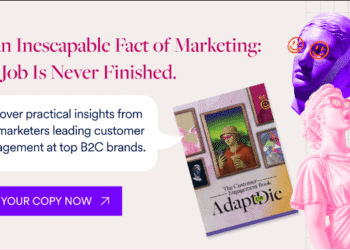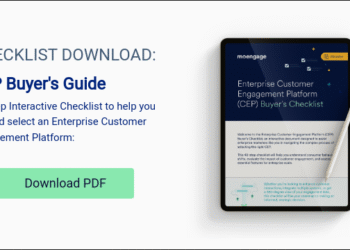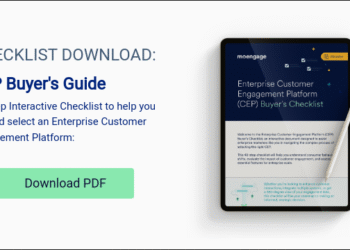The mobile gaming industry has matured into one of the most competitive landscapes in digital business. With fewer new titles launching, legacy hits dominating the charts, and hundreds of games fighting to keep players hooked through fresh content drops, the question isn’t whether mobile gaming will continue to grow, but how developers and publishers can thrive in such a crowded space.
To unpack these dynamics, we spoke with Mariusz Gąsiewski, industry expert and Head of Mobile Gaming & App Strategy at Google. In this conversation, Mariusz shares why long-term success in mobile is more of a marathon than a sprint, how monetization models are evolving, and what strategies developers should embrace to engage both high-value players and broader audiences across markets.
AppSamurai: We know mobile gaming isn’t going anywhere, but it’s more competitive than ever. With fewer new titles emerging and hundreds of existing games constantly pushing out fresh content, what approaches are actually proving successful in keeping players engaged?
Mariusz Gąsiewski:
I believe there is still significant potential in mobile gaming, as it remains a massive business. However, I don’t think there’s any “magic jiu-jitsu move” or a simple guide on “how to succeed in five steps.” The mobile gaming industry has professionalized, making it more of a marathon than a sprint. Today, real success comes from a strategic combination of excelling in product development, data analysis, user feedback, growth, and a long-term approach to company building (month by month).
AppSamurai: In one of your recent reports, you noted a distinct split between the monetization models of the top games by revenue and those by downloads. What does this difference reveal about the evolution of monetization in mobile gaming, and how might it signal where the market is headed next?
Mariusz Gąsiewski: True. A disproportionately high concentration of in-app and subscription revenue is held by a small number of top-performing games. These are often legacy titles, launched years ago, that have undergone extensive monetization testing and optimization. Their growth is typically driven by user acquisition campaigns targeting high-value players who are most likely to spend. Furthermore, many of these games focus on mature Western markets where download rates are stagnating or even declining. Consequently, a small fraction of the player base is responsible for the vast majority of the revenue.
AppSamurai: You’ve written, “The less casual the game, the less it depends on ad monetization.” This shift has contributed to the saturation of the casual genre, while also improving the user experience. From your perspective, how does this trend reshape the competitive area and what strategic advantages or pitfalls does it create for publishers?
Mariusz Gąsiewski:
While overall ad revenue in the mobile market is growing faster than in-app purchase (IAP) revenue, there is limited public data available on the growth of ad monetization. A key difference is that ad revenue is significantly less concentrated among top-performing titles compared to IAPs.
As the mobile gaming landscape becomes increasingly competitive, it is tempting for developers to focus exclusively on high-spending audiences. The strategy of increasing “buyer rates” among a small pool of users has become a common model, especially in Western markets. However, this is a dangerous path, as it leads to the industry consistently over-monetizing the same small group of players. When growth is solely focused on high-value users, overall download numbers stagnate and grow much more slowly than revenue.
This situation creates a significant opportunity: developing experiences tailored to non-paying users, who can be monetized effectively through ads. The potential is greatest in emerging markets, where advertising already constitutes a major source of gaming revenue.
AppSamurai: Mobile apps now play a central role in the lives of younger audiences, driving a fundamental shift in behavior and expectations. How should developers adapt their design, content, and monetization strategies to engage -and retain- these emerging and more ‘’emotional’’ generations?
Mariusz Gąsiewski:
In a recent report I published on non-gaming apps, I examined how different generations approach mobile applications. The analysis revealed that mobile apps are particularly significant for younger audiences, who are more inclined to use them to actively research brands, products, and services. They are also more willing to form a connection with a brand by downloading its specific app. Furthermore, younger people are more likely to pay for mobile apps than older generations. These factors combined present a compelling case for brands targeting this demographic to invest heavily in their mobile app strategy.
However, capturing the attention of this younger demographic presents a unique set of challenges. Their short attention spans mean that an app has a very limited window to demonstrate its value. Therefore, a clear value proposition, an effective onboarding process, and the strategic use of data to personalize the user experience are more critical than ever for success.
AppSamurai: Quality and user feedback are as critical to growth as paid acquisition. Beyond marketing, which core product and design priorities should developers focus on to create an app that delivers long-term retention and loyalty?
Mariusz Gąsiewski:
Long-term retention and loyalty are about creating value for users. While eye-catching creatives, smart marketing, and the novelty effect can attract users and make them stay for a few days, building long-term retention requires a deep understanding of a specific audience segment—based on research, data, and conversations with potential and existing users—and addressing their needs better than other companies. This is a very difficult task, especially now that the number of downloads in many markets is stagnating or even declining, and countless apps are competing for users’ attention.
Defining and properly communicating a real value proposition is key here. That value proposition isn’t just a tagline in the app; it needs to be demonstrated in user reviews in the app store before a person even downloads the app. According to a major research project by Google, the key triggers for app downloads are social proof, existing brand relationships, and the detailed information provided in the App/Play Store. A very important (and often forgotten) aspect is the onboarding process, which should communicate the app’s features step-by-step without overwhelming the user with information. This is especially important now, as modern marketing based on AI capabilities can bring in users who are more likely to pay. This success can mask problems with the app’s onboarding and UX, making it seem like the app is working well when it might only be succeeding with a very small, specific segment of users.

















